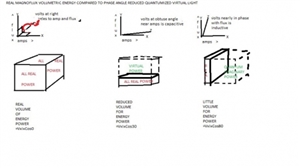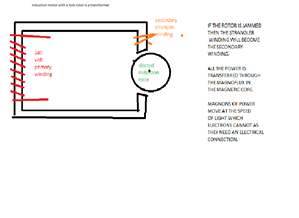Physicists know that particles cannot move at the speed of light, but domestic AC electricity does.
Knowing that AC electrical power is essentially low frequency directional photon light; and if we consider that at the heart of each photon is a magnon, [which consists of a spinning area of magnetic magnoflux inertia in the x,y direction], then we can envisage that the magnon’s flux/amp spinning stuff can be attracted forward by an electric voltage at right-angles in the z direction to form a volume [packet] of wave energy. But note, we need to give these magnons of inertia energy space to move in; because if we restrict the space by a phase angle we will get quantum virtual imaginary volt/amps VA just re-discovered by cosmologists and called phantom energy, rather than real power.
Power = Volts x Amps x Cos ϴ.

So how does an induction motor work if we have this new 3D model of electro-magnetism
The magnoflux spin effect will also have a huge significance if the universe is magnetised and polarised as can be seen in this blog


